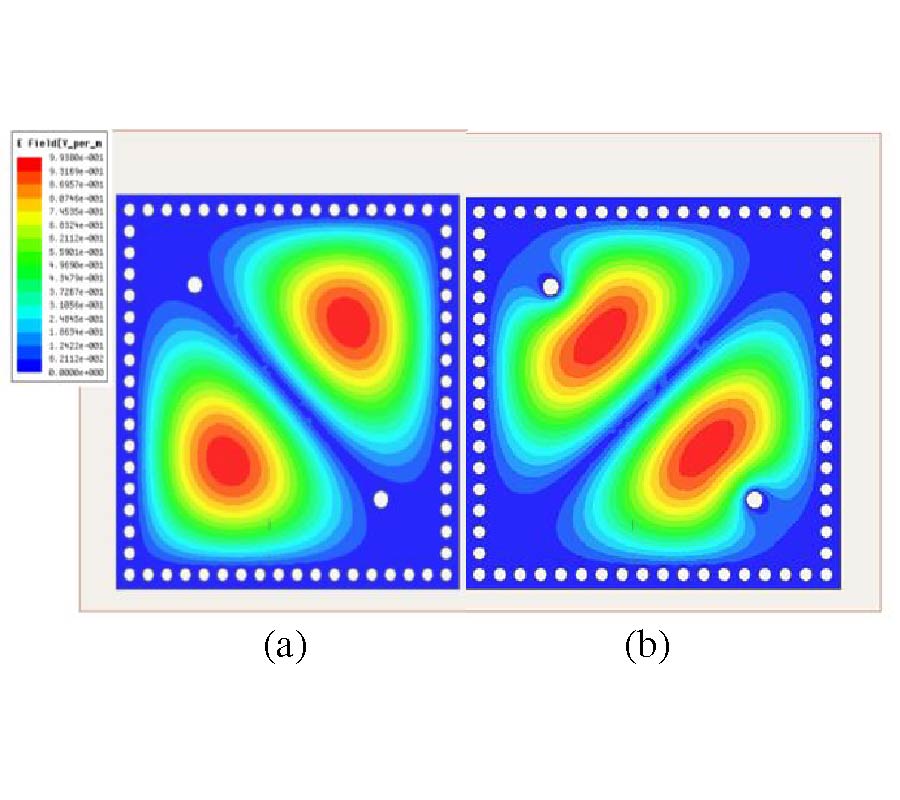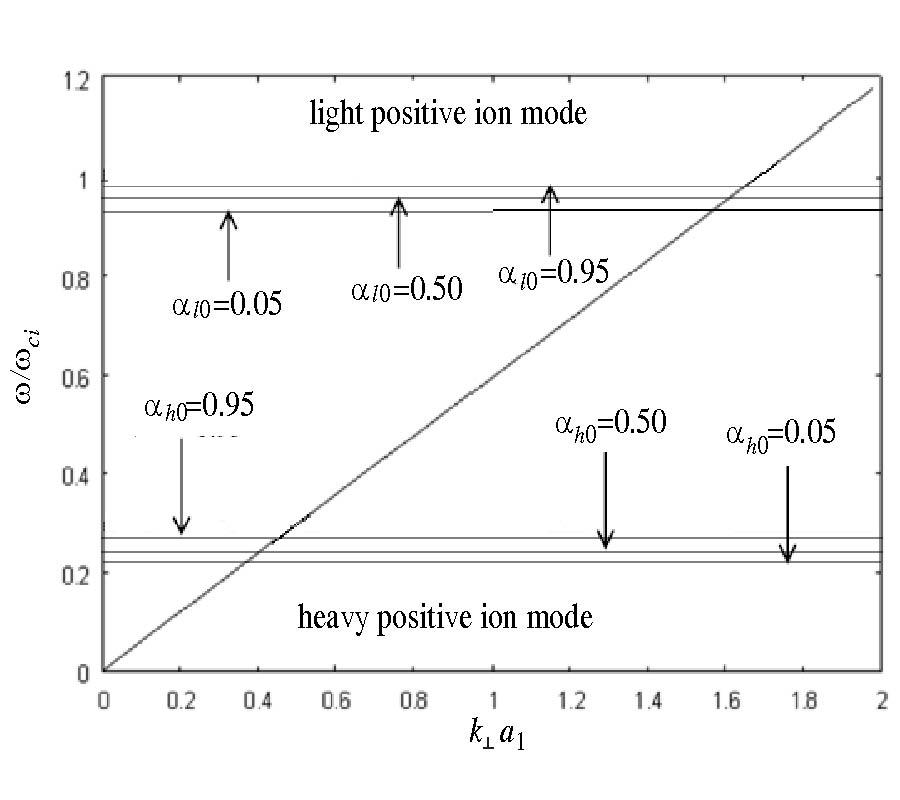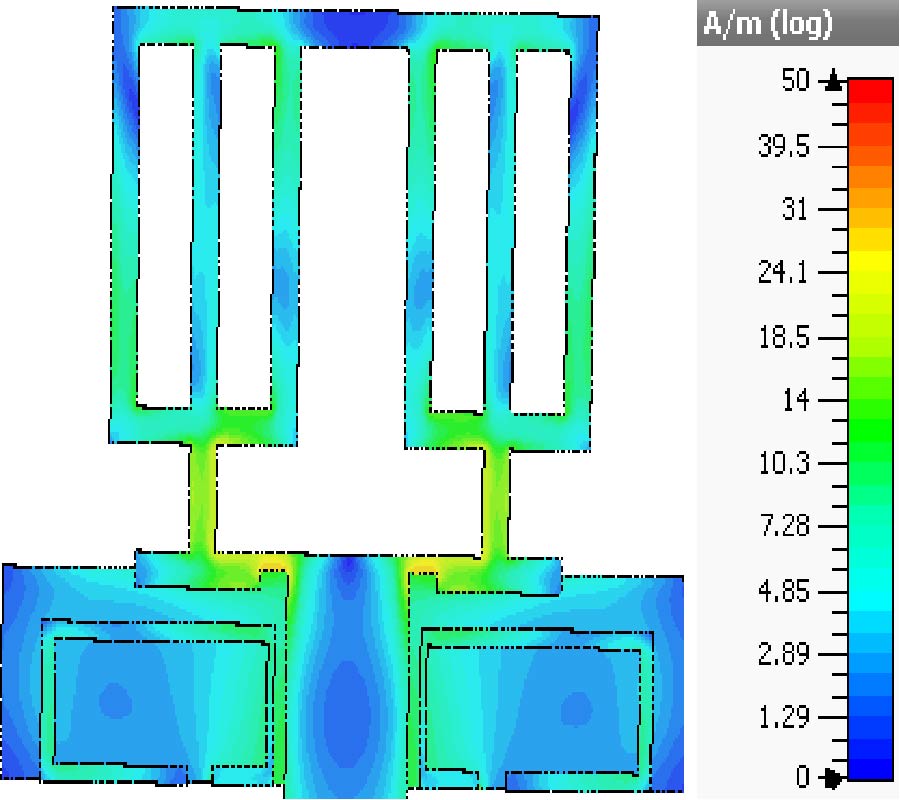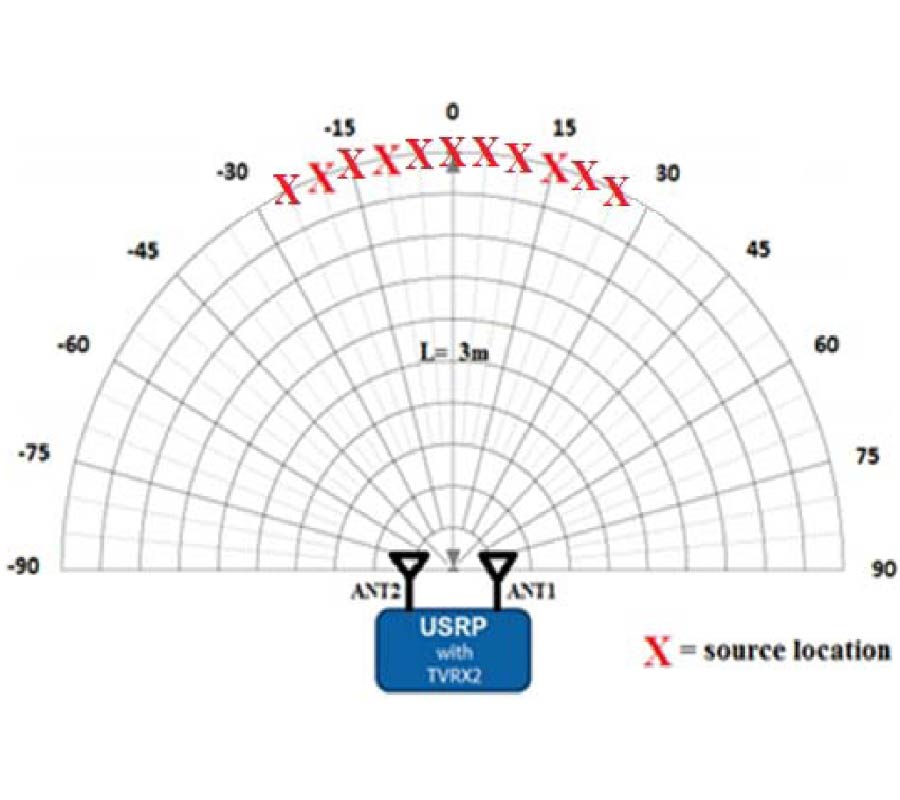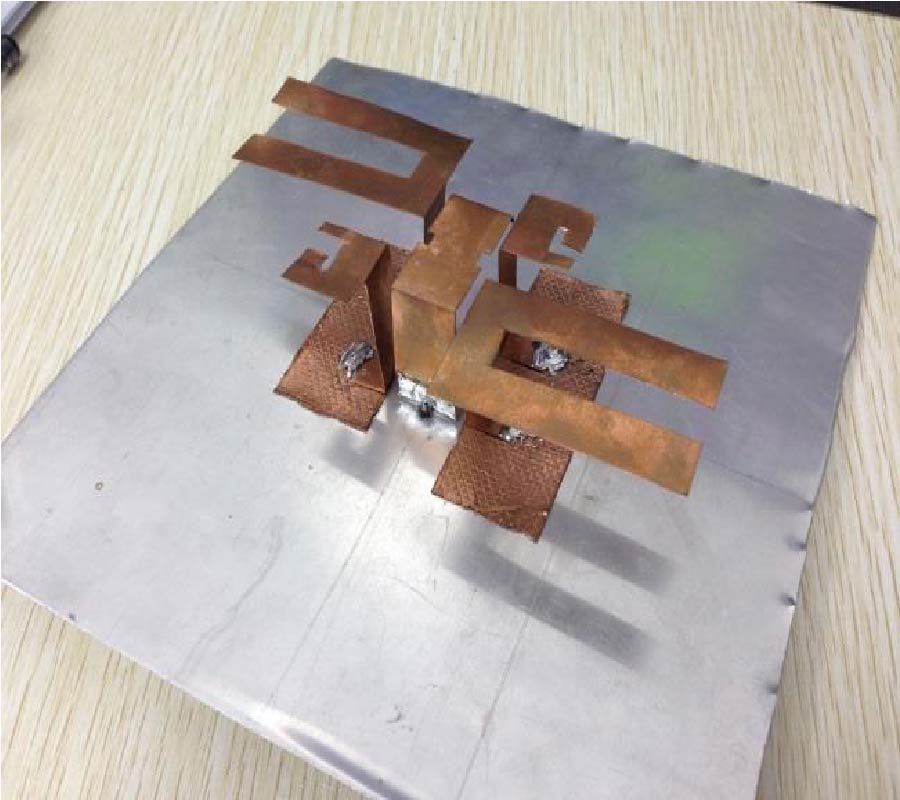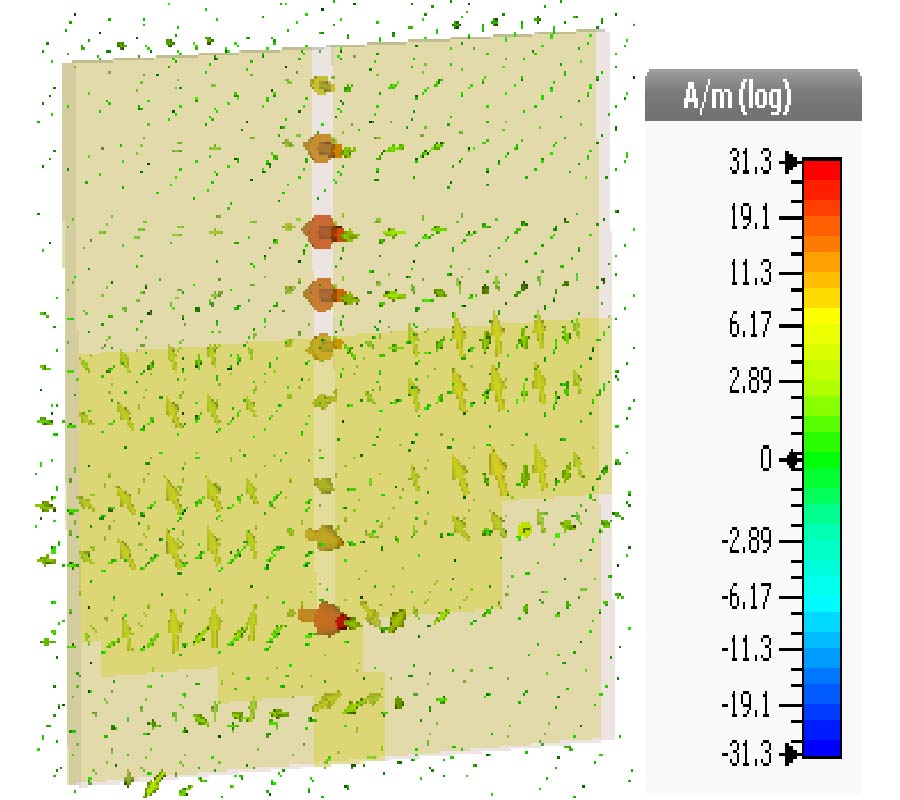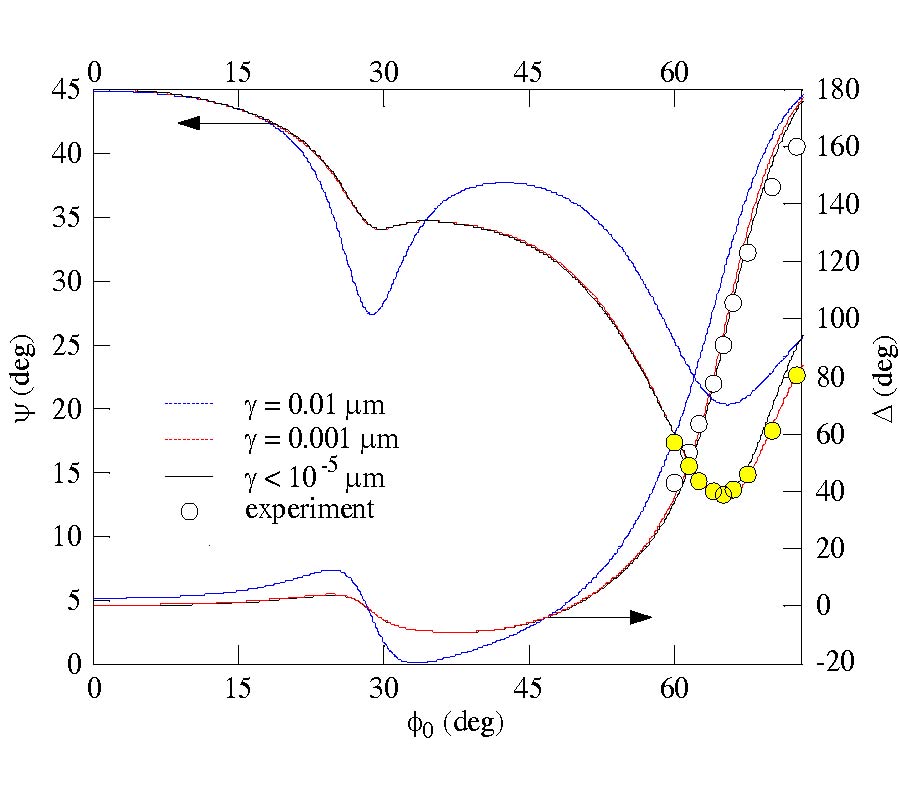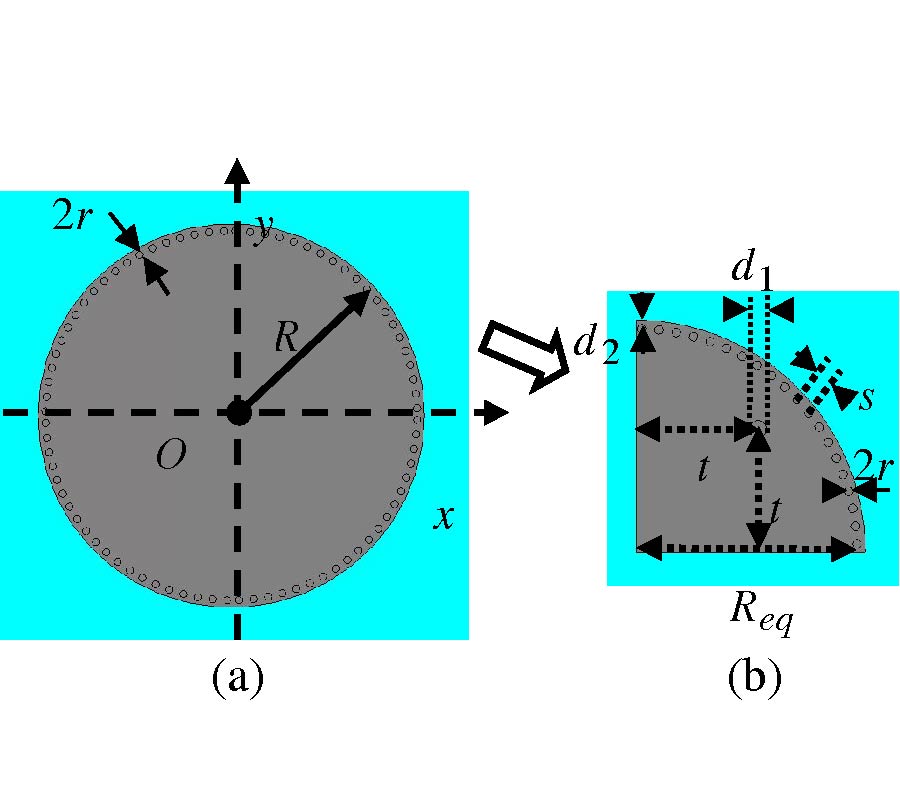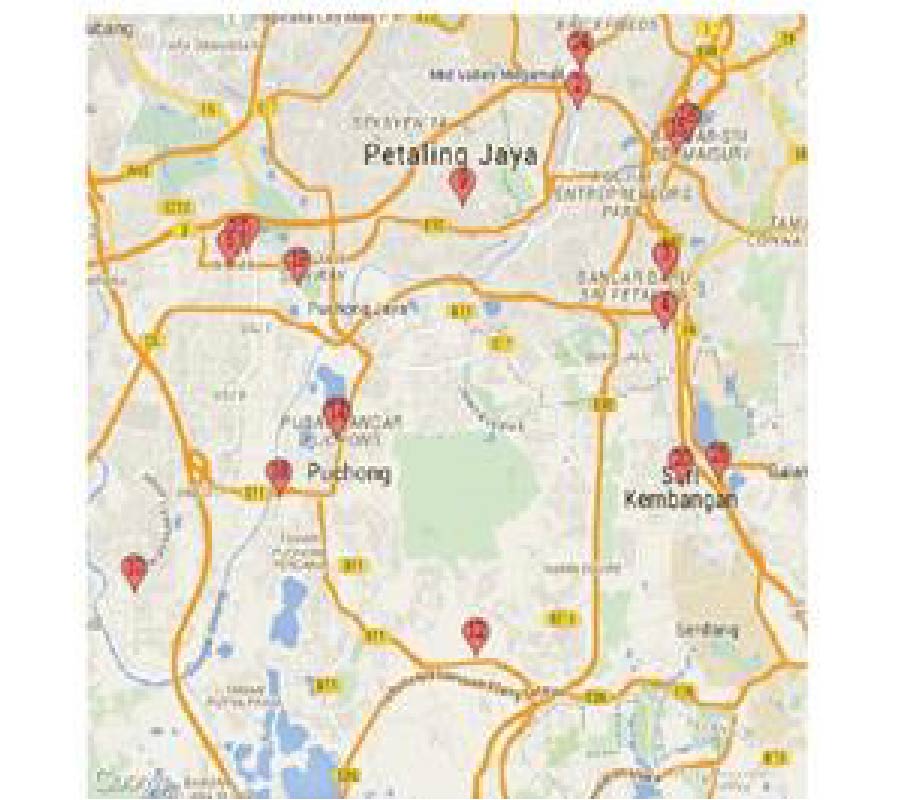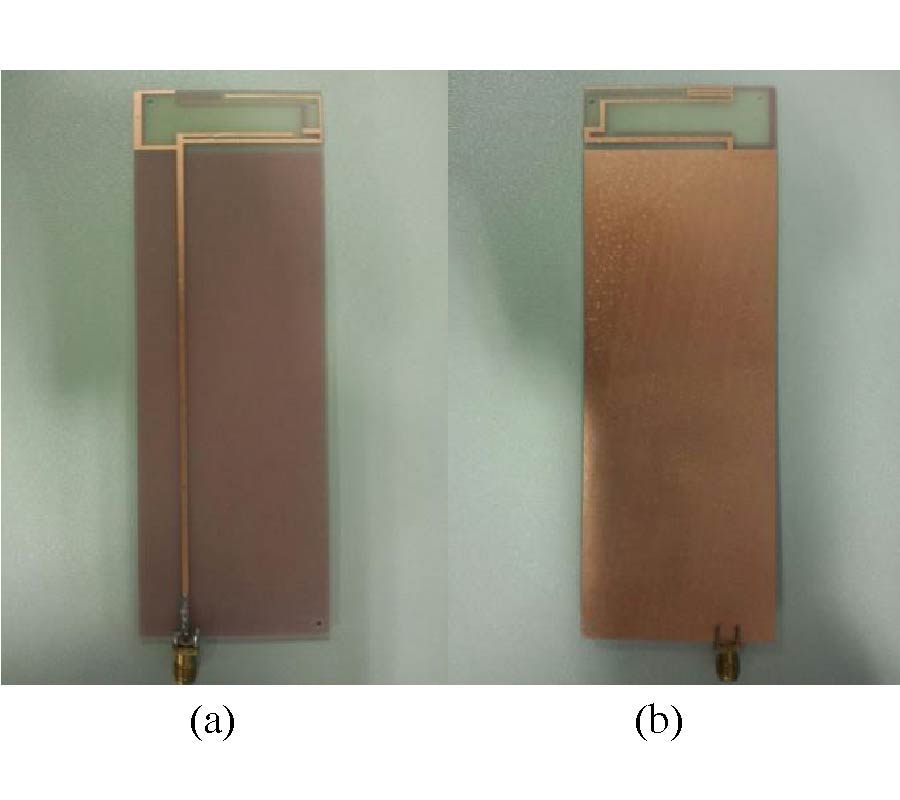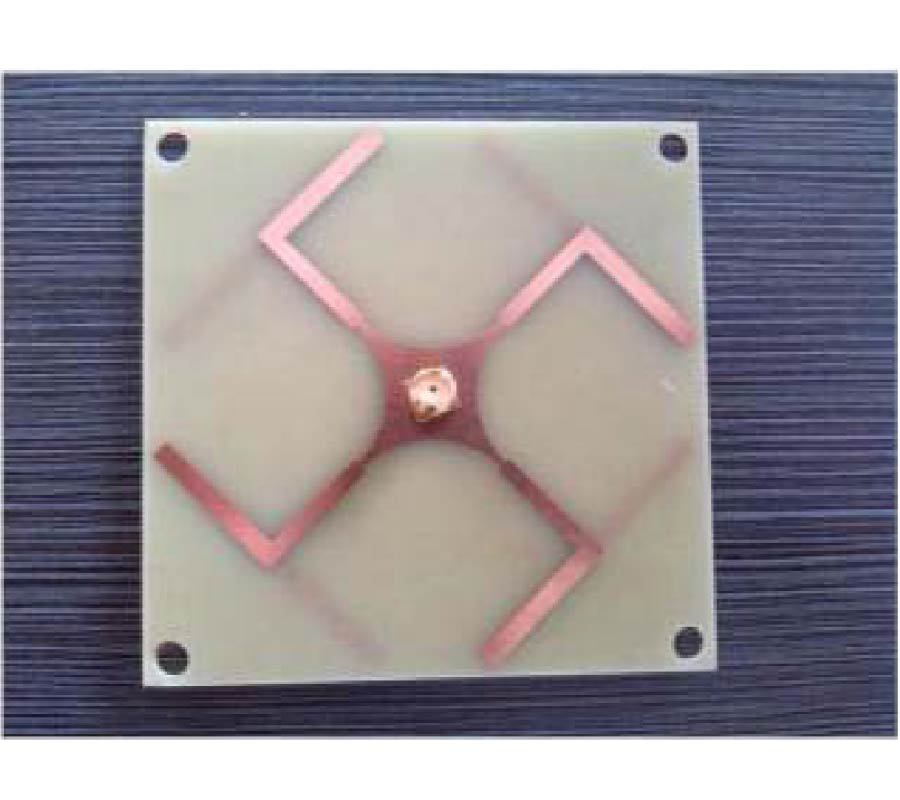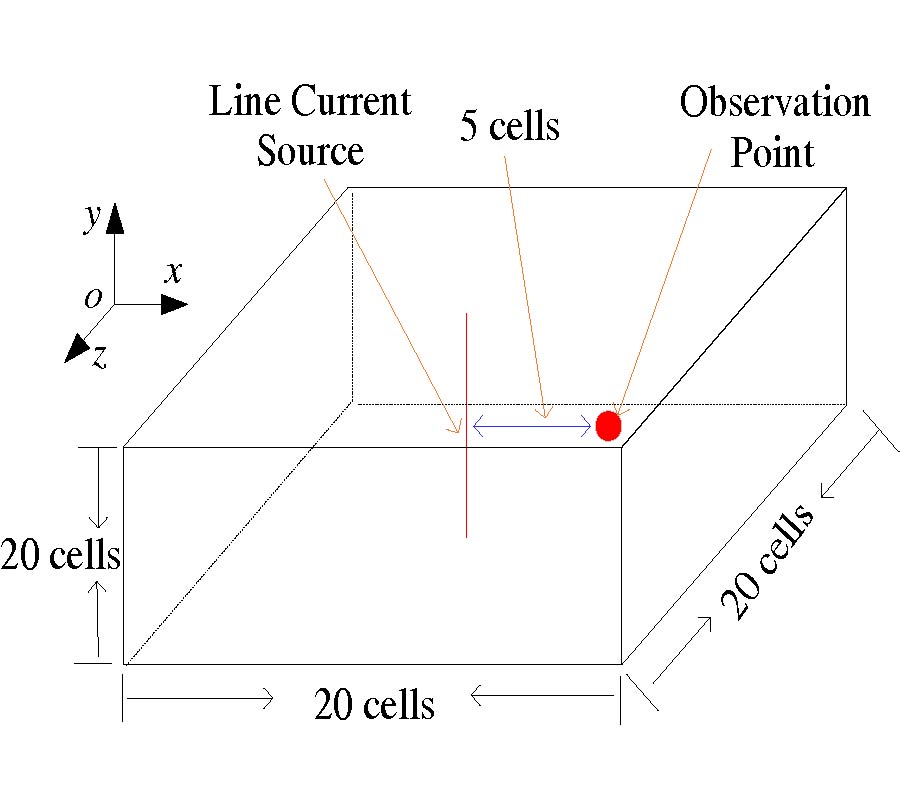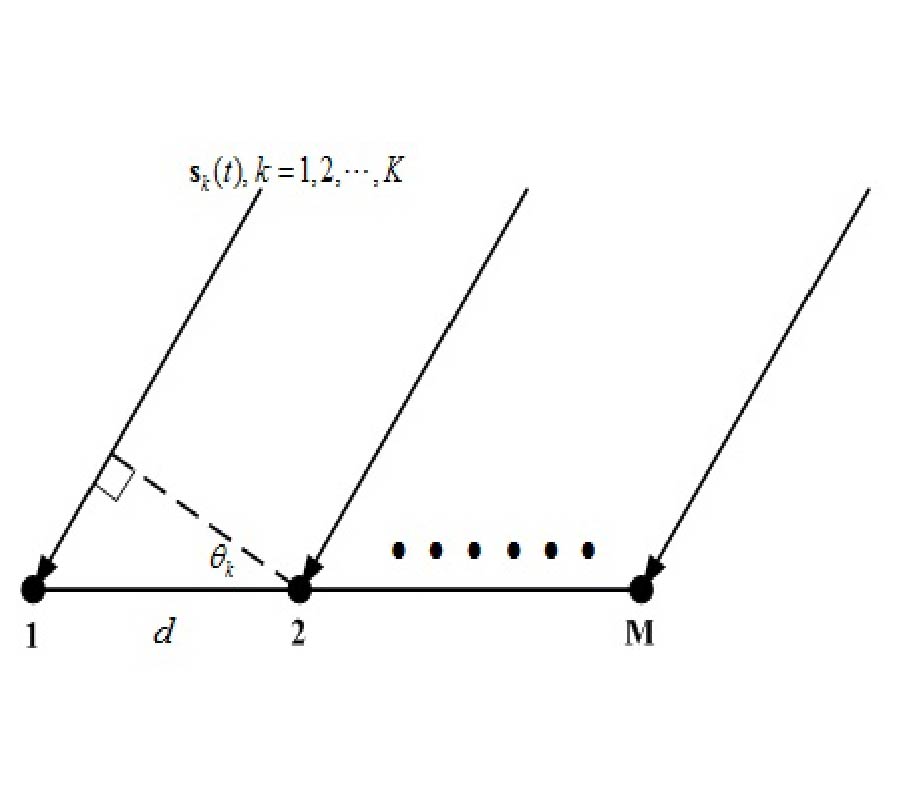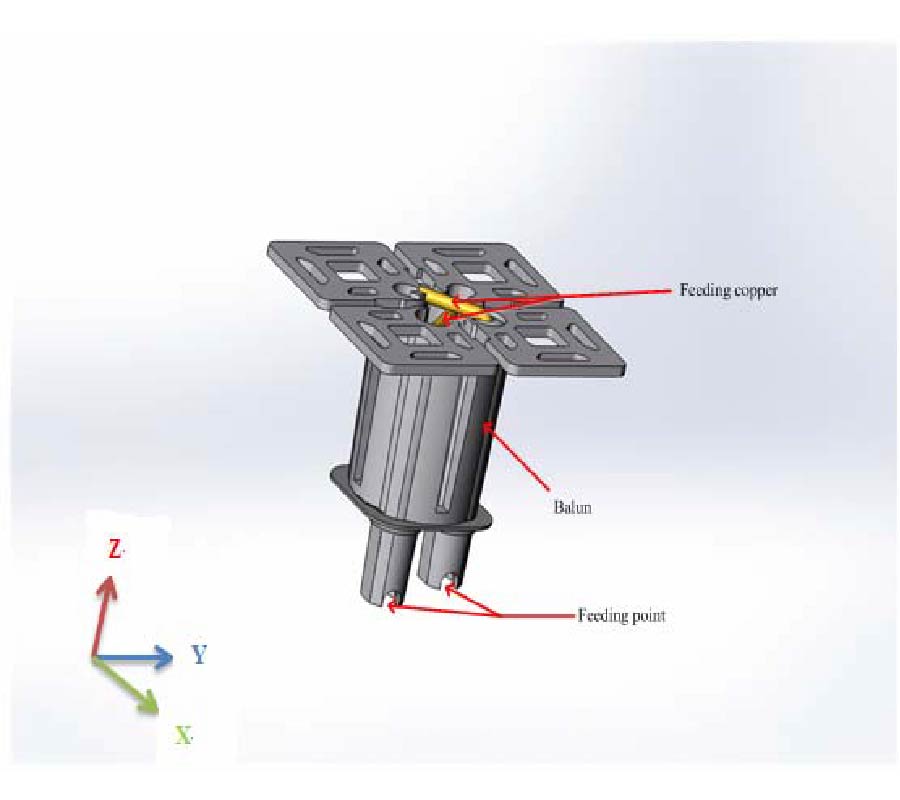Wideband Antenna with Reconfigurable Band Notched Using EBG Structure
Huda Abdul Majid
,
Mohamad Kamal Abd Rahim
,
Mohamad Rijal Hamid
,
Mohd Fairus Mohd Yusoff
,
Noor Asniza Murad
,
Noor Asmawati Binti Samsuri
,
Osman Ayop
and
Raimi Dewan
A wideband antenna with band notch function using electromagnetic bandgap (EBG) structure is proposed. The antenna is capable of reconfiguring up to three band notch operation. Three EBGs are aligned underneath the feed line of the wideband antenna. The transmission lines over EBGs unit cells perform as a band stop filter. A switch is placed on each of the EBG structure, which enables the reconfigurable band stop operation. The simulated and measured reflection coefficients, together with the radiation patterns, are shown to demonstrate the performance of the antenna.
